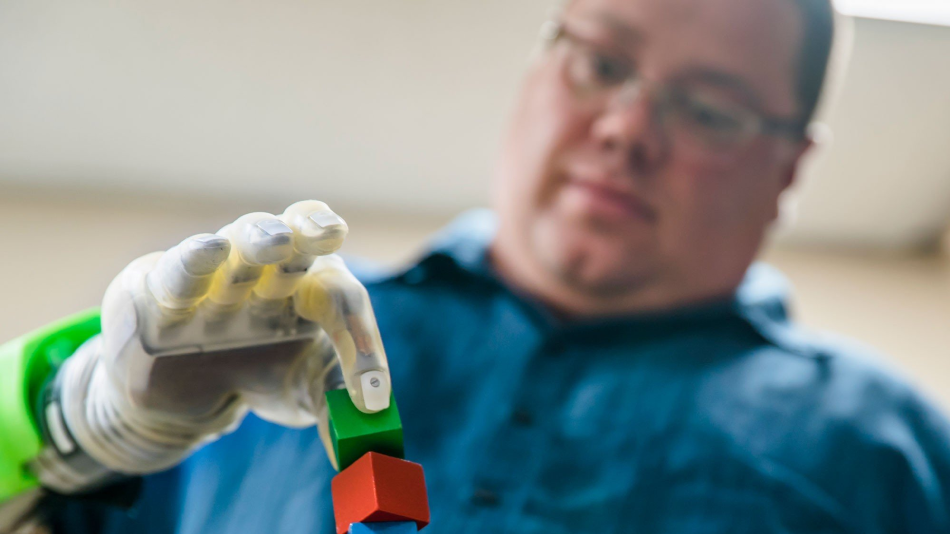
Image Credit: Evan Dougherty / University of Michigan Engineering
For the last decade, scientists have been making significant advancements in the journey to offer reliable, effective, mind-controlled prosthetics to amputees. The aim of this work is to develop limbs, in particular hands, that people would be able to control with their minds just like they do with their natural limbs. In achieving this goal, scientists would be able to restore capabilities lost to amputation, giving people back their sense of independence and enhancing their quality of life.
Back in 2012, scientists a the University of Pittsburgh made a significant breakthrough in this research when they implanted electrode arrays in the motor cortex, the brain region responsible for generating movement, of a woman who was completely paralyzed from the neck down. As a result, the woman was able to control a robotic arm with her mind, allowing her to regain some of her lost mobility, and demonstrating to other research teams how successful mind-controlled prosthetics may be developed.
However, previously scientists had struggled to connect bionic limbs to brain signals that are strong enough to communicate with it. While a brain-machine interface can pick up this signal, they are too invasive and expensive to be considered as a realistic approach for mind-controlled prosthetics. In addition, the nerve signals generated by the brain and spinal cord’s peripheral nerves are too weak.
The team at the University of Michigan has overcome this challenge by amplifying these signals with machine learning. The method was tested on our amputees over one year, the team observed how the prosthetic hands allowed amputees to regain fine motor movement, enabling them to execute the movements needed to pick up bricks, hold a soda can, or even play rock, paper, scissors.
Converting Nerve Signals into Movement Commands for the Prosthetic
This is the first research project that has been able to record the nerve’s millivolt signals. In doing so, the team was able to use machine learning to train algorithms to convert these signals into movements. The researchers report that the mind-controlled prosthetics worked immediately, as soon as they were switched on, demonstrating no delay between thought and movement.
To enable the implant to work, the amputee’s peripheral nerves are cut and then stitched to the person’s muscle. Over several months the site is left to heal, nerves and blood vessels develop in the area. Once healed, electrodes are implanted into the site, which enables the nerve signals produced there to be recorded and communicated to the prosthetic hand without delay. The signals picked up on by the electrodes are translated into movements via the machine-learning algorithms established by the training period.
The team observed that amputees fitted with the prosthetic hand could move each digit individually, as well as their thumbs. For each person, several minutes were required to record their nerve signals to calibrate the machine learning algorithms for each individual. After almost a year of testing, no recalibration was required, showing the endurance and reliability of the method.
Currently, scientists plan on continuing the development of their mind-controlled prosthetics so that ultimately they will be widely available to amputees. The next stage will be recruiting and studying a larger group in a large-scale clinical trial.
Disclaimer: The views expressed here are those of the author expressed in their private capacity and do not necessarily represent the views of AZoM.com Limited T/A AZoNetwork the owner and operator of this website. This disclaimer forms part of the Terms and conditions of use of this website.